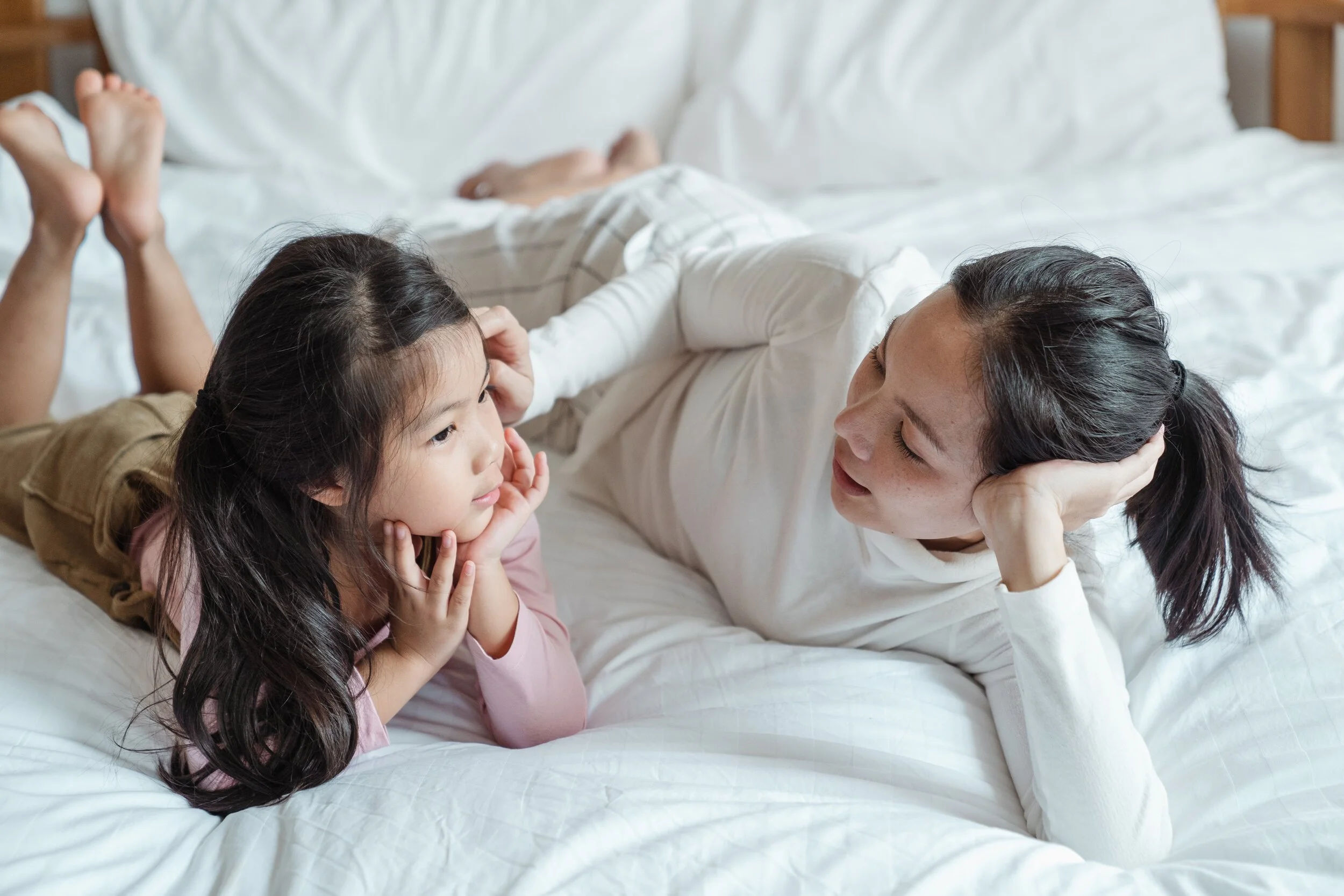During my first three years as an educator, I’ve seen my students fearlessly try to climb up the slide on the playground, hide behind me when a bee flew too close, and anxiously hold back from sharing during show and tell or trying something new because it seemed too challenging. I’m no stranger to fear and anxiety, but for my students who ranged from three to five years old, they were only just beginning to recognize and understand these emotions themselves.
Like all emotions, fear and anxiety aren’t “bad” emotions. In fact, they are important for triggering our “alarm system” when there is danger and it is natural to feel nervous in new situations. However, much like anger, fear and anxiety can become big emotions that make it difficult for us to concentrate, regulate our actions, interact with others, or try new things. Before we can help children manage these emotions we first need to help them recognize when they are feeling scared or anxious and what happens when they feel that way.
Recognizing Fear and Anxiety
When helping children recognize when they are feeling scared or anxious, it is important to remember to validate their feelings and be patient. Whether they are scared of the dark, dogs, or even vegetables, those are real feelings, sometimes associated with prior experiences and sometimes are a result of those things being new and unfamiliar. While fear and anxiety share similarities with how we respond physically, there are differences between the emotions. Fear is the reaction to an immediate danger, otherwise known as the fight, flight, freeze reaction and is an adaptive function of survival helping us to stay safe, follow safety guidelines, and ask for help. Anxiety, in contrast, is an anticipation of danger. Anxiety often happens when we are faced with something new, unpleasant, or difficult. Our internal “alarm system” might go off even if there is no immediate danger. This can be confusing and makes it harder to problem solve. Here are some questions to help your child understand fear and anxiety:
What do you feel inside your body?
Some examples for guidance may include their heart or mind is racing, they are short of breath, or their stomach is hurting.
What are you thinking about when you are scared or anxious?
If their fear is about trying something new they may be thinking they can’t do it, they aren’t good enough, or it’s not worth trying.
How do you protect yourself?
You can reflect with your child on what they are currently doing when they are feeling scared or anxious. For example, if they were scared of big dogs they might avoid going anywhere they think they might have to encounter a big dog.
What is the result of this behavior?
In the previous example, the child may be afraid to go places if they might encounter a big dog but as a result they may be missing out on seeing friends or having new experiences.
How do you interact with others?
You can further develop your child’s self-awareness by reflecting on how they interact with others when they are feeling those emotions. For example, do they become aggressive or shy?
Superpowers for Fear and Anxiety
In the new Kingdom of Fear in Wisdom: The World of Emotions, children will create a story that will help them understand the questions above. After helping the character through understanding their fear or anxiety, kids will earn superpowers that are coping strategies for these emotions. Much like anger, there are many strategies that can help us feel better, and the social emotional learning games in Wisdom: The World of Emotions help kids identify ones that they might like to try themselves. Regulating fear and anxiety can happen in two steps:
Citizen of the Kingdom of Fear taking deep breaths to calm his alarm system.
Step 1: Calm your alarm system
Here are some tips and strategies you can share with your child to help them feel calm when they are feeling scared or anxious:
Ask for help:
Children especially may still need help understanding their internal “alarm system” to identify whether there is real danger or not. Encourage them if they are ever feeling scared or anxious to ask for help. Make sure your child knows who are the other adults they can trust when you are not present (e.g. at school, at camp).
Confident affirmations:
When we are feeling afraid but we know we aren’t in immediate danger, we can try saying out loud “I am not in danger” to assure ourselves or when we are feeling anxious we could say “Stop, these thoughts are not helpful” to help us stop ruminating. If we feel our heart pounding, we can remind ourselves that “These bodily sensations are unpleasant but they are not dangerous.”
Breathing exercises:
Sometimes, even though I am feeling mentally confident, I find myself feeling physically anxious, my heart is racing and I feel shaky. In this situation it’s helpful for me to take slow deep breaths to try refocusing my mind and feel calm. Your child can also try placing their hands on their stomach or on top of their head while taking deep breaths. Introducing your child to meditations and cultivating positive habits can help them grow more confident in their ability to overcome new, unpleasant or difficult situations.
Step 2: Reflect and problem solve
Once your child is feeling calmer, you can try these activities together to help them think and process their fear and anxiety:
Make a 5-step plan:
As humans, we tend to avoid situations that make us anxious. For example, if a child is anxious about going to school, they might take forever to get ready in the morning or say they feel sick upon waking up. While avoiding those situations alleviates our anxiety in the short term, the more we avoid those situations, the less confident we feel about our ability to overcome them, resulting in soaring anxiety in the long term. With your child, you can make a 5-step plan to help them gradually expose themselves to what makes them anxious. The Child Mind Institute suggests helping your child set reasonable goals for overcoming fears such as sleeping on their own.
Things we can control vs. things we can’t control:
Ask your child to draw a circle with a self-portrait. Inside this circle, invite your child to draw or list the things they can control (e.g. my behavior, my thoughts, my body). Outside of this circle, ask your child to draw or list the things they cannot control (e.g. others’ feelings and reactions, the weather, the noise outside, my parents not getting along). You can show to your child that often when we feel anxious, we are focusing on things that are outside of our circle, i.e. out of our control. Helping your child focus on what they can control will give them agency to tackle new, difficult or unpleasant situations.
Even as adults we know life can be scary and there’s a lot we might feel anxious about. We can assure our children, as we can assure ourselves, that we are not alone. Together, we can identify these emotions and our “superpowers” for helping us to feel calm, brave, and confident.






